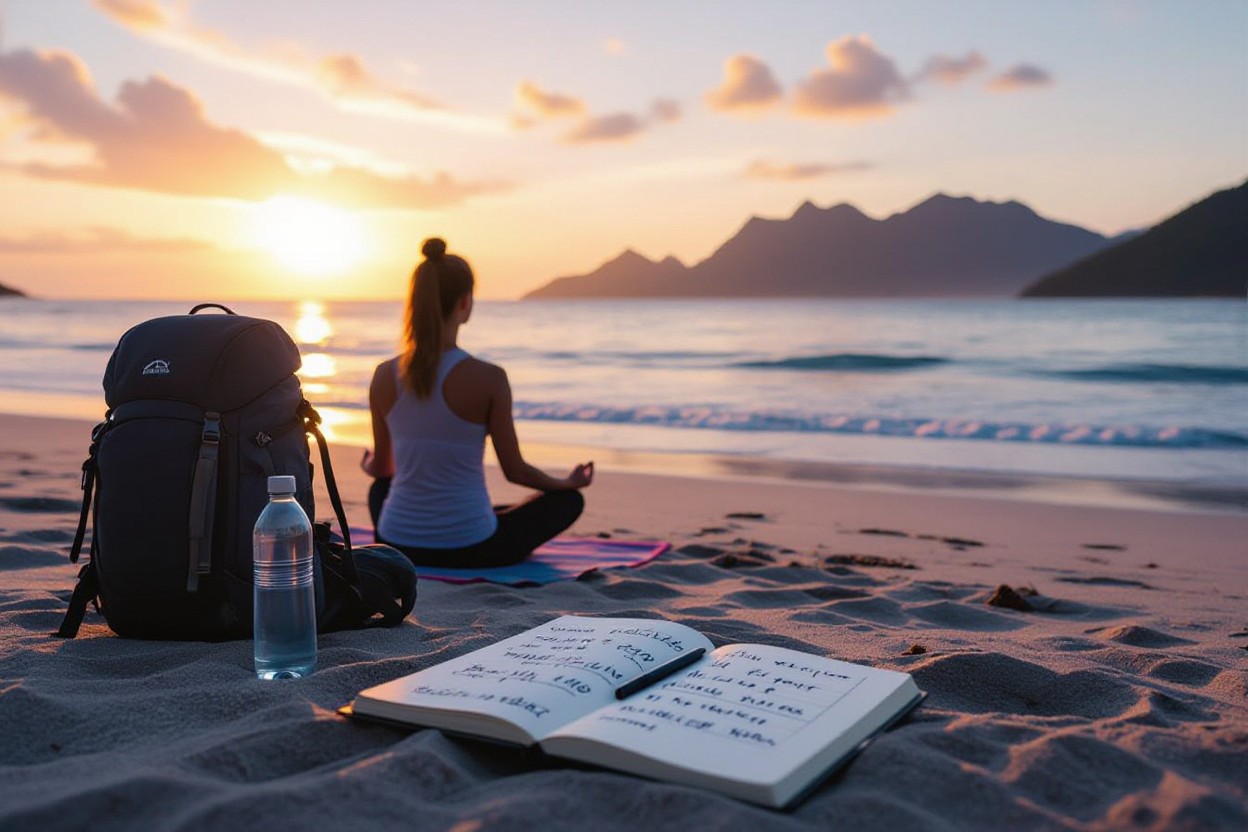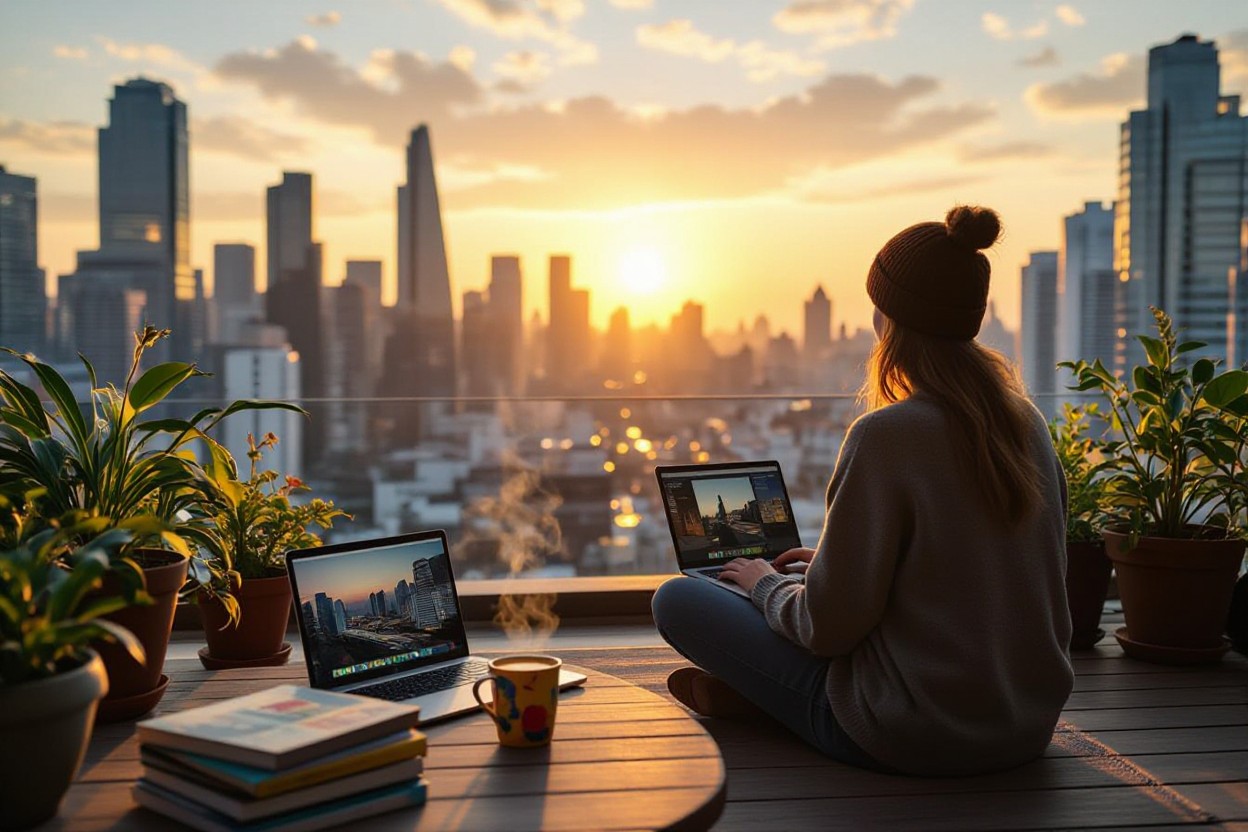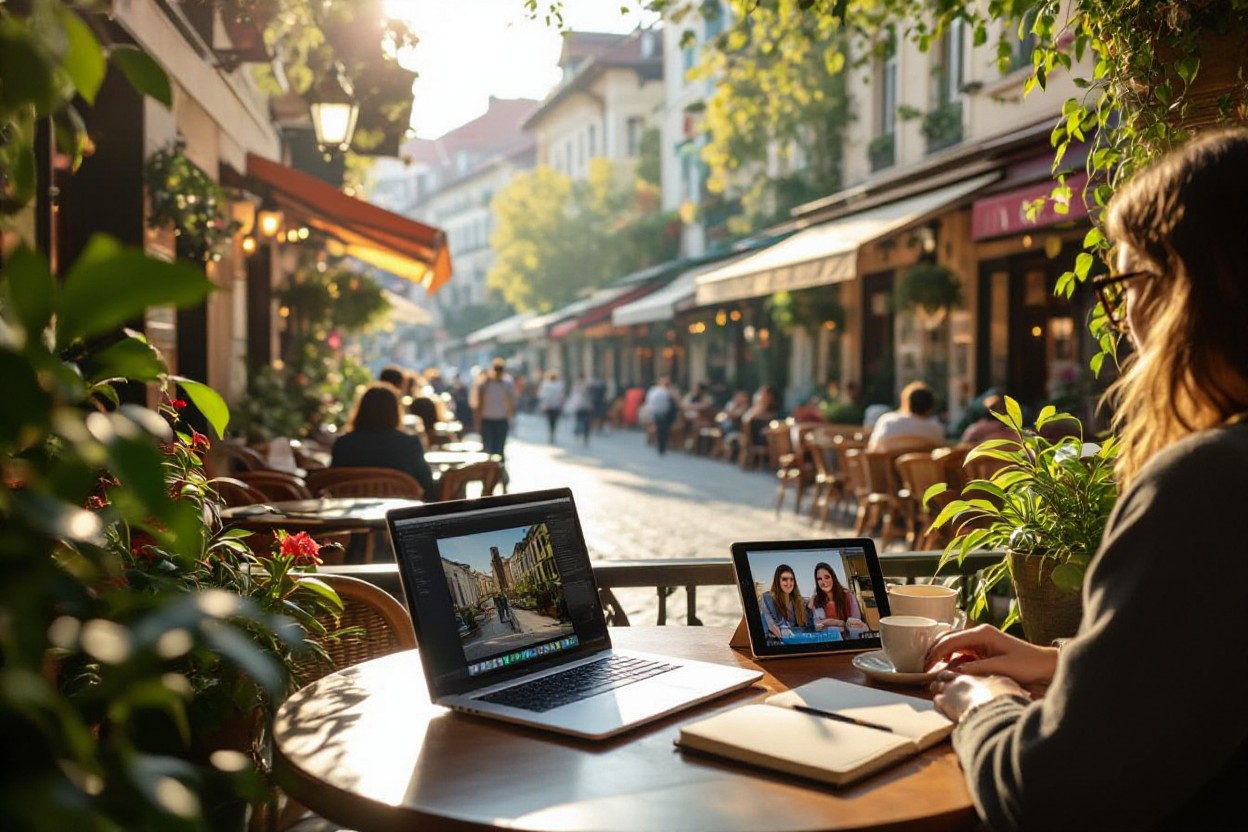Nomad life brings exciting opportunities, but it can also challenge your mental well-being in unexpected ways. As you navigate through different time zones and cultures, maintaining your psychological health becomes important for your long-term success and happiness. Your digital nomad journey can quickly turn from dream to burden if you don’t implement the right lifestyle strategies. Whether you’re a seasoned traveler or just starting, these practical tips will help you avoid common mental health pitfalls that many remote workers face. From establishing routines to building meaningful connections, you’ll discover how to create a sustainable and fulfilling nomadic lifestyle that supports both your professional goals and personal well-being.
The Art of Balancing Work and Adventure
Mastering the digital nomad lifestyle requires finding your unique rhythm between productivity and exploration. Set clear work hours during your peak energy times – whether that’s early mornings before sightseeing or evening sessions after adventures. Create dedicated workspaces in each location, even if it’s just a specific corner of your room, to maintain focus and separate work from leisure time.
Establishing Boundaries for Productivity
Block your calendar into focused work zones and adventure periods. Use the 4-hour productivity rule – dedicate 4 solid hours to deep work daily, then free up the rest for exploration. Set up an automatic email response during your local working hours to manage client expectations across time zones. Your workspace setup should mirror your home office necessities, maintaining professional standards while embracing location flexibility.
Scheduling Downtime for Enjoyment
Plan your adventures strategically around work commitments – schedule major excursions for weekends and lighter workdays. Build in buffer days between intense travel activities and important work deadlines. Use a digital calendar to block out dedicated exploration time, treating it with the same priority as client meetings.
Your downtime deserves thoughtful planning to maximize both enjoyment and recovery. Consider alternating high-energy activities with relaxation days to maintain sustainable energy levels. Schedule at least one full day off per week where you completely disconnect from work and immerse yourself in your current location. This rhythm helps prevent burnout while ensuring you don’t miss out on the experiences that drew you to the digital nomad lifestyle.

Discovering Your Joy Triggers
Mapping out what genuinely brings you happiness while traveling requires active observation of your daily experiences. Take note of moments when you feel most energized, peaceful, or fulfilled – whether it’s morning walks through local markets, working from scenic cafés, or connecting with fellow nomads. Your joy triggers might surprise you and often differ from what social media suggests should make digital nomads happy.
Creating a Personal Happiness Checklist
Build a personalized list of activities, environments, and routines that consistently boost your mood. Include both big experiences (weekend trips, cultural festivals) and small daily pleasures (favorite coffee spots, workout sessions, video calls with friends). Update this list monthly as you discover new sources of joy in different locations. This becomes your go-to resource when you need a mental health boost.
Engaging in Self-Reflection During Travels
Set aside dedicated time each week to assess your emotional state and overall satisfaction. Use your travel experiences as opportunities for deeper self-discovery. Notice how different cultures, environments, and daily routines impact your mental well-being. Document these insights in your journal to track patterns and make adjustments to your nomadic lifestyle.
The practice of self-reflection while traveling opens doors to profound personal growth. Compare your reactions to various situations with your pre-nomad self. Pay attention to how your values and priorities shift as you experience different ways of living. This awareness helps you make better decisions about future destinations and lifestyle choices, ultimately leading to a more fulfilling nomadic journey.

Mindfulness as a Daily Practice
Mindfulness serves as your anchor while navigating different time zones, cultures, and work responsibilities. Regular mindfulness practice can reduce travel anxiety by 63% and improve your ability to adapt to new environments. By incorporating mindful moments throughout your day, you’ll maintain clearer focus for work and greater appreciation for your travel experiences.
Simple Meditation Techniques for Travelers
Your meditation practice can adapt to any location or schedule. Start with 5-minute breathing exercises in your accommodation before work. Focus on your breath while walking through new cities, or practice body scan meditation during long flights or bus rides. Download offline meditation apps like Headspace or Calm to maintain consistency across different destinations.
Integrating Mindfulness into Daily Routines
Transform everyday digital nomad activities into mindful moments. Practice mindful eating by savoring local dishes without screens. Take mindful work breaks by observing your surroundings with full attention for 2-3 minutes. Set mindful transitions between work and exploration by taking three conscious breaths before switching tasks.
Create mindful morning rituals that ground you regardless of location, perhaps mindful coffee sipping while journaling, or gentle stretching before opening your laptop. Studies show that nomads who maintain consistent mindful routines report 40% better work-life satisfaction. Your mindfulness practice becomes a portable home base, helping you stay centered while embracing the excitement of location independence.
Documenting Your Journey for Emotional Clarity
Documenting your nomadic lifestyle through various mediums helps you process experiences, track emotional patterns, and maintain perspective during challenging times. Regular documentation creates a powerful tool for self-reflection and personal growth, while providing valuable insights into your evolving relationship with travel and work.
Benefits of Keeping a Travel Journal
Your travel journal serves as an emotional compass and personal time capsule. Writing about daily experiences helps reduce anxiety by 35% and improves emotional processing. Beyond preserving memories, journaling allows you to identify triggers, celebrate victories, and maintain emotional equilibrium across different locations and cultural contexts. The simple act of putting thoughts on paper creates distance from overwhelming emotions and helps you maintain mental clarity.
Techniques for Effective Journaling
Start each entry with a quick emotion check-in and location stamp. Dedicate 15 minutes daily to unfiltered writing about your experiences, challenges, and victories. Mix traditional journaling with voice notes, photos, and collected mementos to create a multi-sensory record of your journey. Focus on capturing both factual events and your emotional responses to them.
Structure your entries using the “PAR” method: Problem, Action, Result to track how you navigate challenges. Include a gratitude section to maintain perspective during difficult times. Digital nomads who maintain consistent journaling report 40% better stress management and clearer decision-making. Use prompts like “Today I learned…” or “I feel most alive when…” to dive deeper into your experiences and emotional landscape.

Maintaining Connections While Abroad
Living as a digital nomad doesn’t mean sacrificing your relationships back home. Building a structured approach to staying connected helps prevent isolation and maintains your support network while exploring the world. Your existing relationships provide emotional stability during challenging times abroad, making them worth the extra effort to maintain.
Strategies for Sustaining Friendships
Set up a rotating schedule to connect with different friends each week. Choose 3-5 core relationships to prioritize and block specific times in your calendar for video calls, just as you would for work meetings. Share your travel experiences through private Instagram stories or a personal newsletter to keep multiple friends updated simultaneously without exhausting yourself with individual updates.
Utilizing Technology for Regular Check-Ins
Time zone management apps like World Time Buddy help coordinate calls across different regions. Schedule monthly group video sessions with multiple friends simultaneously using platforms like Zoom or Google Meet. Use Marco Polo for asynchronous video messages when live calls aren’t possible due to time differences.
Digital tools can transform how you maintain long-distance relationships. WhatsApp groups dedicated to specific friend circles, shared digital photo albums, and collaborative Spotify playlists create ongoing connection points. Research shows that maintaining 2-3 meaningful interactions per month is enough to sustain close friendships. Schedule these touchpoints around your work routine, perhaps during your morning coffee or evening wind-down, making them a natural part of your nomadic lifestyle.
Planning Homecomings for Reinforcement
Strategic homecomings serve as vital anchors in your nomadic lifestyle. Scheduling regular returns to your home base helps you maintain emotional stability while providing natural breaks to process your experiences. These planned pauses allow you to reconnect with your support system and recharge your emotional batteries before beginning on your next adventure.
Setting Concrete Return Dates
Mark specific dates on your calendar for home visits at least 6 months in advance. This practice gives you fixed points to navigate around and helps you structure your travel itinerary more effectively. Schedule these returns to coincide with meaningful events like holidays or family celebrations, maximizing the emotional value of your time at home.
Communicating with Loved Ones
Share your return schedule with family and close friends as soon as you set it. This transparency helps ease their concerns and gives them dates to look forward to. Regular updates about your travel plans and confirmation of your return dates help maintain trust and understanding with your support network.
Consider creating a shared digital calendar with your inner circle to track your movements and planned returns. This system allows everyone to stay informed and plan accordingly. Your loved ones can schedule their own events around your visits, making the most of your time together. Regular check-ins about these dates help prevent misunderstandings and ensure smooth transitions between your nomadic adventures and home life.
Tailoring Your Living Environment
Your living space shapes your digital nomad experience profoundly. Selecting the right environment can boost your productivity by 40% and significantly impact your mental well-being. From choosing between bustling city centers or tranquil suburban areas to picking accommodations that match your work style, each decision influences your daily happiness and success as a location-independent professional.
Identifying Comfort Zones: Urban vs. Rural
Your ideal location directly affects your energy levels and creativity. Urban environments offer networking opportunities, reliable WiFi, and diverse coworking spaces, while rural settings provide peace, lower costs, and a closer connection to nature. Test both environments in short stays before committing to longer periods – many digital nomads discover their sweet spot lies in medium-sized cities that balance accessibility with tranquility.
Choosing Accommodations that Foster Socialization
Living spaces that encourage social interaction can combat isolation – a common challenge for digital nomads. Coliving spaces and community-focused accommodations report 65% higher satisfaction rates among remote workers compared to traditional rentals. Look for properties with shared workspaces, community events, or proximity to digital nomad hotspots.
Consider accommodations with built-in social features like communal kitchens, rooftop lounges, or organized activities. Properties within walking distance to coworking spaces or cafes increase your chances of meaningful connections by 80%. Digital nomad-friendly buildings often host weekly meetups, skill-sharing sessions, and networking events that naturally facilitate relationship building while maintaining your professional focus.
Conclusion
With this in mind, your success as a digital nomad heavily depends on how well you implement these lifestyle strategies into your daily routine. By maintaining work-life balance, knowing your happiness triggers, practicing meditation, journaling, nurturing friendships, planning family visits, and choosing suitable environments, you can create a fulfilling nomadic lifestyle. These practices will help you stay grounded, focused, and emotionally balanced while exploring the world. As you continue your journey, keep adapting these tips to fit your personal needs, and you’ll find yourself experiencing a more rewarding and sustainable digital nomad lifestyle.